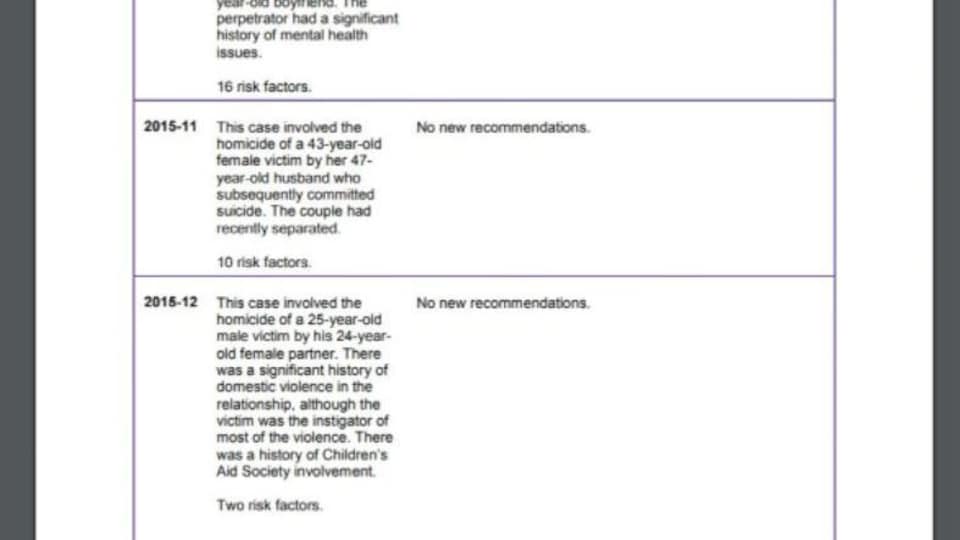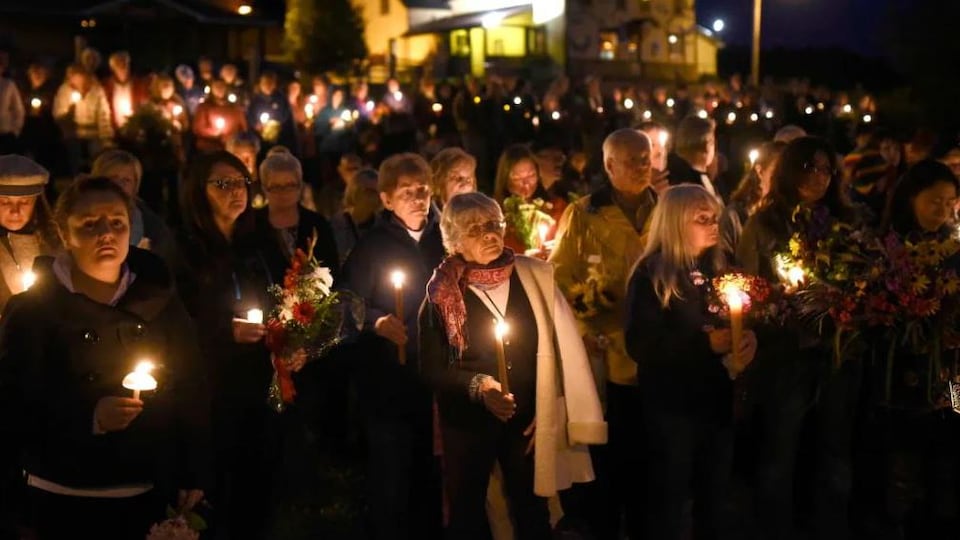Anastasia Kuzyk, Nathalie Warmerdam, Carol Culleton: the names of three women killed in 2015 near Wilno, Renfrew County, bring hope to the extraordinary season.
At the start of the public inquiry into the tragedy on Monday, stakeholders say they hope this process will bring the change they want, after years of study and hundreds of recommendations on domestic violence homicides and the their avoidance in Ontario.
In addition to holding three coroner inquests into domestic violence cases in 1998, the province has a committee whose sole mandate is to review domestic homicides – both women and men and children – each year for two decades. . He then delivers a report to the Office of the Chief Coroner for Ontario, where he makes recommendations to prevent further deaths.
But data on actions taken in response to these recommendations do not seem available, even asking for them. And none of the changes recommended by the committee or by the jurors from previous inquests are legally valid.
For victims ’rights defenders who will participate in the investigation into Wilno, there is no question of giving up.
Toronto attorney Kristen Mercer will represent Renfrew County’s End Violence Against Women organization. [Ces défenseurs] they decided to participate not because they believed there was a perfect solution, or because they hoped the investigation would magically lead to a series of changes. They do it because they can’t afford not to.he pointed out.
This coalition of individual and public, private and community actors will be one of three parties standing in the public scrutiny of the murders of three women by Basil Borutski on September 22, 2015.
The other two parties are Valerie Warmerdam – the daughter of one of the victims – as well as the Ontario government.
The survey will focus on domestic violence in rural areas. Challenges are specific in this context, such as isolation, irregular cellular reception, the absence or lack of public transport and the distance to be covered for police authorities. Rural culture is generally more tolerant of guns, and resources for victims of abuse are fewer and farther away than in cities.
The coroner’s inquest need not result in recommendations. But that scenario is still likely – and if it does, the coalition has prepared a team it hopes will help change.
First in Canada
Ontario’s Domestic Violence Death Review Committee was established in the 2000s following inquests that followed the killings inArlene May in 1996, then by Gillian Hadley in 2000. It was the first committee of its kind in Canada to be created-Quebec published its first report in 2020.
Since its inception, the Ontario Panel has made more than 400 recommendations in its annual reports. More than 250 deaths have been investigated since 2018, last year when its annual report was published – those from 2019-20 are not yet complete.
The recommendations cover everything from rules for buying firearms to the importance of responding quickly when an individual considered an abusive partner must adhere to an intervention program, but none of it is properly reason. .
Some of the proposed changes may be related to the case of Basil Borutski. In particular, she denied a court order to follow one of these programs for nearly two years before going to prison for triple feminicide.
During the killings, Basil Borutski was released on bail after strangling one of them. But the fact that Borutski ignored court orders and refused to seek help was raised in court.
But the Committee’s recommendations are not legally valid – nor are those in the Office of the Chief Coroner.
After its investigations, the Office submits a report to the relevant organizations to implement its recommendations. After six months, these recipients must respond to them and say if they have been implemented, and if not, they must explain themselves.
When recommendations come from the Committee, organizations also have six months to respond, but this is not an obligation.
An anonymous portrait
A repeated mention in the Committee’s reports: no new recommendations .
Mentioning “no new recommendation” means that there is no point justifying the recommendations raised during the review or that the point or theme raised has already resulted in one or more recommendations in a previous case.says one of the annual reports.
Asked by CBC on the Committee’s recommendations implemented, the Office of the Chief Coroner did not provide any examples.
And why the Office does not provide any statistics on the number of Committee recommendations and previous inquiries placed in place, it is answered that doing such follow-up would be messy. The recommendations could be very broad and relevant to some organizations, it added. In addition, because recipients of recommendations are not obligated to respond to them, some responses are never sent to us.said a spokesman.
But some recommendations coming from the investigations have been implemented, such as the establishment of expert courts and the establishment of the Committee itself, the Bureau added.
Optimism in spite of everything
In this case, organizations working with victims of domestic violence hope that the recommendations will take shape.
Renfrew County’s End Violence Against Women organization has hired women’s rights lawyer and advocate Pamela Cross. He met with residents of this area in the spring and will express their concerns and requests during the investigation.
pamela Cross resigned from the Ontario Roundtable on Violence Against Women in 2018, along with its co-chair, for what they described as a lack of government action on their demands. Part of his role, in the case of investigating events in Wilno, is to analyze the recommendations to be made and create strategies to animate them.
Cases of domestic violence have risen since the beginning of 2020, he said. We are […] we can, and should, hold decision makers accountable so that they stop ignoring these recommendations.
Highest sentence for Borutski
In 2017, Basil Borutski was sentenced to life imprisonment with no possibility of release for 70 years.
But recently, the Supreme Court of Canada ruled a series of convictions unconstitutional. The nation’s highest court made this decision when it rejected the request for prosecution in the case of the Quebec mosque killer, Alexandre Bissonnette.
This provision in the Criminal Code, enacted in 2011, has been used in some cases where multiple murders have occurred. Basil Borutski’s is one of them.
After the Supreme Court recession, which took place on May 27, anyone who received a consecutive sentence could request their release after 25 years in prison.
Basil Borutski did not participate in his own trial. He is now 64 years old. It has not been clarified whether he intends or not to request his release sooner than expected.
With information from Kristy Nease, CBC
Source: Radio-Canada


